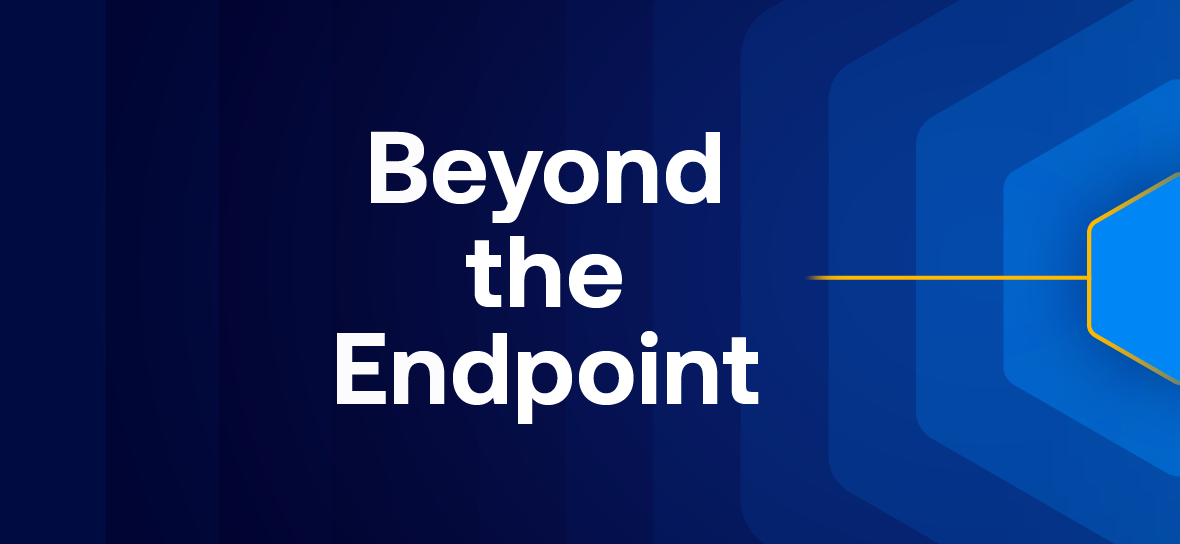
文章指出端点检测和响应(EDR)工具在处理事件响应时表现良好,但在暴露管理方面存在局限性。EDR工具主要设计用于反应性安全,无法提供足够的漏洞情报和攻击路径可见性。相比之下,Tenable提供全面的攻击面覆盖、深入的漏洞情报和透明的风险评估能力,帮助组织主动识别和修复安全风险。 2025-10-14 13:0:0 Author: www.tenable.com(查看原文) 阅读量:87 收藏
October 14, 2025
7 Min Read

Endpoint detection and response tools may serve you well when it comes to handling incident response. But, when used for exposure management, they can leave you blind to large portions of your attack surface.
Key takeaways:
- Exposure management is fundamentally a proactive security discipline. Therefore, tools designed for reactive security can’t give you the visibility and context you need to prevent incidents.
- EDR tools lack the deep vulnerability intelligence and exposure context security teams need to understand where attackers are most likely to go after they enter your environment.
- Without visibility and context, you can’t effectively close off attack paths before they’re exploited.
We get it: your teams are drowning in security alerts and data and you’re under pressure to demonstrate ROI with the tools you have. Who can blame you for wanting to keep things simple? Turning to your endpoint detection and response (EDR) vendor to try and meet your exposure management needs is tempting. After all, those EDR tools serve you well when it comes to handling incident response. So why wouldn’t a single-agent approach for managing exposure work equally well for preventive security?
In reality, when used for exposure management, EDR solutions leave organizations blind to vast areas of the attack surface because they only scan endpoints instrumented with their agents. As a result, EDR tools can’t give you visibility into all the other devices — including routers, switches, firewalls, VPNs, OT/IoT devices, and unmanaged assets — that threat actors exploit to gain access and move laterally across your network. Think of the way Salt Typhoon and other threat actors have exploited flaws in network devices to gain initial access: EDR tools wouldn’t see that.
We summarize the key challenges of using EDR for exposure management in the video below.

Even when they’re built with network scanning capabilities for vulnerability assessment, EDR solutions pale in comparison to Tenable for both vulnerability and exposure management. In a head-to-head analysis, Tenable detected 40% more vulnerabilities and 16% more CVEs than a competing EDR solution. Meanwhile, the EDR solution failed to detect weak cipher suites, known remote desktop protocol (RDP) exposures, and SQL flaws. These are glaring oversights, given how frequently attackers exploit weak encryption, open RDP, and SQL, and given that the ability to detect weak encryption is a requirement for compliance with the General Data Protection Regulation (GDPR), the Payment Card Industry Data Security Standard (PCI DSS), and the Health Insurance Portability and Accountability Act (HIPAA).
EDR for exposure management and the myth of cost savings
EDR providers will tell you that their single-agent architecture will save you money and simplify complexity. That couldn’t be further from the truth. Organizations that have turned to their EDR provider for vulnerability or exposure management have seen cost and complexity skyrocket. Why? Because EDR solutions require extensive integrations to provide the minimum scanning coverage and remediation capabilities to function as a vulnerability or exposure management solution.
Beware of EDR solutions branded “exposure management”
Exposure management is a proactive security practice that requires deep vulnerability intelligence as a foundational component. Vulnerability data drawn from multiple sources, including CVE data, threat intelligence, and behavioral analysis, gives you the context you need to assess risk. Detection needs to extend beyond package versions to include registry settings and misconfigurations so you can fully understand the potential impact in your environment. False positives should be kept to a minimum and, when they do occur, you need the ability to flag and suppress them so you can fine-tune the detection logic over time.
Data transparency is also key. CVE coverage should be fully visible within the tool and publicly accessible. EDR solutions are often insufficiently invested in vulnerability intelligence and CVE coverage is typically not published. Even when CVE data and threat intelligence are used, they’re primarily limited to agent-based deployments.
Most importantly, EDR can’t reveal gaps in your coverage and give you the context you need to understand where attackers are most likely to go once they enter your environment. Without that knowledge, you can’t effectively close off attack paths before they’re exploited.
Here are 10 essential exposure management criteria and how Tenable’s offerings compare to an EDR-centric approach.
How exposure management with Tenable compares to EDR-centric tools
| Capability | Tenable | EDR-centric tools |
| Incident prevention | Proactive exposure management with full visibility into the entire attack surface; actionable reporting and dashboards aid in remediation | Reactive alerts, incident response driven |
| Attack surface coverage | IT, cloud, OT, IoT, networks, web apps, AI solutions, identity systems, third-party apps; multiple detection technologies, including agents, passive monitoring, scan engines, DAST, and OT sensors | Endpoints with agent deployed; limited network scanning |
| Data accuracy and context | Validated assessments performed by interrogating vulnerabilities to confirm presence and exploitability, reducing false positives | Assumptive detection, leading to more false positives; can overlook key issues such as weak ciphers, open RDP, and SQL flaws |
| Vulnerability intelligence and transparency | Granular vulnerability intelligence from Tenable Research, tracking vulnerability history and analyzing more than 50 trillion data points; CVE coverage is fully visible within the platform and available publicly. | Malware-centric intelligence; CVE coverage is not typically published, reducing transparency |
| Compliance coverage | Wide variety of compliance frameworks across multiple operating systems; covers 84% of CIS benchmarks | Limited; for example, some EDR tools may only cover CIS benchmarks on Windows |
| Unified view | Unified, fully customizable dashboard with consolidated view of exposures across cloud, web apps, OT assets, containers, identity systems like Active Directory, AI, and attack surface management; extensive integration with other existing security tools in your portfolio | Fragmented across multiple dashboards, requiring users to navigate separate views to access different data sets |
| Transparent prioritization | Openly publishes how Vulnerability Priority Rating (VPR) works to pinpoint the most critical exposures. VPR uses static and dynamic variables and is combined with Asset Criticality Rating (ACR) to calculate an Asset Exposure Score (AES) for prioritization. Includes Attack Path Analysis to highlight attacker routes, using generative AI for step-by-step explanations of potential compromises | Risk-scoring methodology is often a black box |
| Remediation guidance and workflows | Advanced guidance, including patch supersedence and combined exposure solutions; reduces exposure windows from weeks to hours; integrates with ServiceNow, Jira, Slack, Teams, and other tools, automating workflows and tracking remediation progress through customizable projects and SLAs | Each CVE is addressed individually; limited remediation guidance |
| Reporting and customization | Global and custom exposure cards in Exposure View provide a unified, business-aligned look at your security posture. This allows you to combine Tenable insights with data from third-party security tools to assess cross-domain risk, elevate reporting to leadership and easily track your overall Cyber Exposure Score and its trends | Lacks broad customization capabilities; limited flexibility |
| Peer benchmarking and trendlines | Comparison of cyber risk to industry peers to quickly identify shortcomings and strengths | Not available |
Source: Tenable, October 2025
Conclusion
Tenable helps organizations move from reactive firefighting to proactive exposure management. By going beyond endpoints and malware alerts, it delivers complete visibility and clear guidance, giving you the clarity and confidence you need to stay ahead of threats.
Tenable delivers full attack surface coverage with faster time to detection, deeper compliance, and richer intelligence so you can know, expose, and close risk everywhere it lives. It aggregates data across dozens of security tools, providing pre-defined templates, customizable reports, and benchmarking against sector standards to support mixed regulatory and audit requirements. It covers 84% of CIS Benchmarks and natively supports major compliance frameworks, including CIS, NIST, and DISA STIG. Partners like Vanta offer integrations for full compliance evaluations and certification workflows.
With Tenable, security teams can act with confidence, not uncertainty.
Learn more
- Read the blog: Exposure Management Beyond the Endpoint
- View the on-demand webinar: Beyond the Endpoint: Exposure Management That’s Proactive
- Request a demo: https://www.tenable.com/try
- Visit the resource page: https://www.tenable.com/lp/campaigns/25/compare/tenable-vs-crowdstrike/

Gavin Millard
VP, Product, Tenable
Gavin has worked in the cybersecurity sector for over 20 years and is a trained, ethical hacker. As part of his role as VP Product for Tenable, Gavin provides strategic counsel to major global clients, helping them to address their cybersecurity risk, and helps to define Tenable’s long term technology vision for its solutions. Gavin has a deep understanding of how attackers plot a breach and has spoken frequently on hacking, exposure management and other key security topics.
- Endpoint security
- Exposure Management
- Vulnerability Management
Cybersecurity news you can use
Enter your email and never miss timely alerts and security guidance from the experts at Tenable.
如有侵权请联系:admin#unsafe.sh